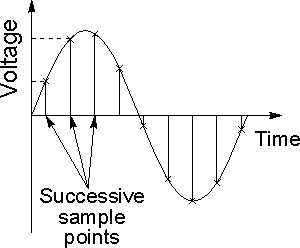Products Category
- FM Transmitter
- 0-50w 50w-1000w 2kw-10kw 10kw+
- TV Transmitter
- 0-50w 50-1kw 2kw-10kw
- FM Antenna
- TV Antenna
- Antenna Accessory
- Cable Connector Power Splitter Dummy Load
- RF Transistor
- Power Supply
- Audio Equipments
- DTV Front End Equipment
- Link System
- STL system Microwave Link system
- FM Radio
- Power Meter
- Other Products
- Special for Coronavirus
Products Tags
Fmuser Sites
- es.fmuser.net
- it.fmuser.net
- fr.fmuser.net
- de.fmuser.net
- af.fmuser.net ->Afrikaans
- sq.fmuser.net ->Albanian
- ar.fmuser.net ->Arabic
- hy.fmuser.net ->Armenian
- az.fmuser.net ->Azerbaijani
- eu.fmuser.net ->Basque
- be.fmuser.net ->Belarusian
- bg.fmuser.net ->Bulgarian
- ca.fmuser.net ->Catalan
- zh-CN.fmuser.net ->Chinese (Simplified)
- zh-TW.fmuser.net ->Chinese (Traditional)
- hr.fmuser.net ->Croatian
- cs.fmuser.net ->Czech
- da.fmuser.net ->Danish
- nl.fmuser.net ->Dutch
- et.fmuser.net ->Estonian
- tl.fmuser.net ->Filipino
- fi.fmuser.net ->Finnish
- fr.fmuser.net ->French
- gl.fmuser.net ->Galician
- ka.fmuser.net ->Georgian
- de.fmuser.net ->German
- el.fmuser.net ->Greek
- ht.fmuser.net ->Haitian Creole
- iw.fmuser.net ->Hebrew
- hi.fmuser.net ->Hindi
- hu.fmuser.net ->Hungarian
- is.fmuser.net ->Icelandic
- id.fmuser.net ->Indonesian
- ga.fmuser.net ->Irish
- it.fmuser.net ->Italian
- ja.fmuser.net ->Japanese
- ko.fmuser.net ->Korean
- lv.fmuser.net ->Latvian
- lt.fmuser.net ->Lithuanian
- mk.fmuser.net ->Macedonian
- ms.fmuser.net ->Malay
- mt.fmuser.net ->Maltese
- no.fmuser.net ->Norwegian
- fa.fmuser.net ->Persian
- pl.fmuser.net ->Polish
- pt.fmuser.net ->Portuguese
- ro.fmuser.net ->Romanian
- ru.fmuser.net ->Russian
- sr.fmuser.net ->Serbian
- sk.fmuser.net ->Slovak
- sl.fmuser.net ->Slovenian
- es.fmuser.net ->Spanish
- sw.fmuser.net ->Swahili
- sv.fmuser.net ->Swedish
- th.fmuser.net ->Thai
- tr.fmuser.net ->Turkish
- uk.fmuser.net ->Ukrainian
- ur.fmuser.net ->Urdu
- vi.fmuser.net ->Vietnamese
- cy.fmuser.net ->Welsh
- yi.fmuser.net ->Yiddish
DSP - Digital Signal Processing Tutorial
- an overview or introduction to the basics of Digital Signal Processing, DSP, and how it can be used in radio receiver technology to improve performance and flexibility.
Today, Digital Signal Processing, DSP, is widely used in radio receivers as well as in many other applications from television, radio transmission, or in fact any applications where signals need to be processed. Today it is not only possible to purchase digital signal processor integrated circuits, but also DSP cards for use in computers. Using these DSP cards it is possible to develop software or just use a PC platform in which to run the DSP card.
DSP has many advantages over analogue processing. It is able to provide far better levels of signal processing than is possible with analogue hardware alone. It is able to perform mathematical operations that enable many of the spurious effects of the analogue components to be overcome. In addition to this, it is possible to easily update a digital signal processor by downloading new software. Once a basic DSP card has been developed, it is possible to use this hardware design to operate in several different environments, performing different functions, purely by downloading different software. It is also able to provide functions that would not be possible using analogue techniques. For example a complicated signal such as Orthogonal Frequency Division Multiplex (OFDM) which is being used for many transmissions today needs DSP to become viable.
What is DSP?
As the name suggests, digital signal processing is the processing of signals in a digital form. DSP is based upon the fact that it is possible to build up a representation of the signal in a digital form. This is done by sampling the voltage level at regular time intervals and converting the voltage level at that instant into a digital number proportional to the voltage. This process is performed by a circuit called an analogue to digital converter, A to D converter or ADC. In order that the ADC is presented with a steady voltage whilst it is taking its sample, a sample and hold circuit is used to sample the voltage just prior to the conversion. Once complete the sample and hold circuit is ready to update the voltage again ready for the next conversion. In this way a succession of samples is made.

Sampling a waveform for DSP
Once in a digital format the real DSP is able to be undertaken. The digital signal processor performs complicated mathematical routines upon the representation of the signal. However to use the signal it then usually needs to be converted back into an analogue form where it can be amplified and passed into a loudspeaker or headphones. The circuit that performs this function is not surprisingly called a digital to analogue converter, D to A converter or DAC.

The advantage of DSP, digital signal processing is that once the signals are converted into a digital format they can be manipulated mathematically. This gives the advantage that all the signals can be treated far more exactly, and this enables better filtering, demodulation and general manipulation of the signal. Unfortunately it does not mean that filters can be made with infinitely steep sides because there are mathematical limitations to what can be accomplished.





